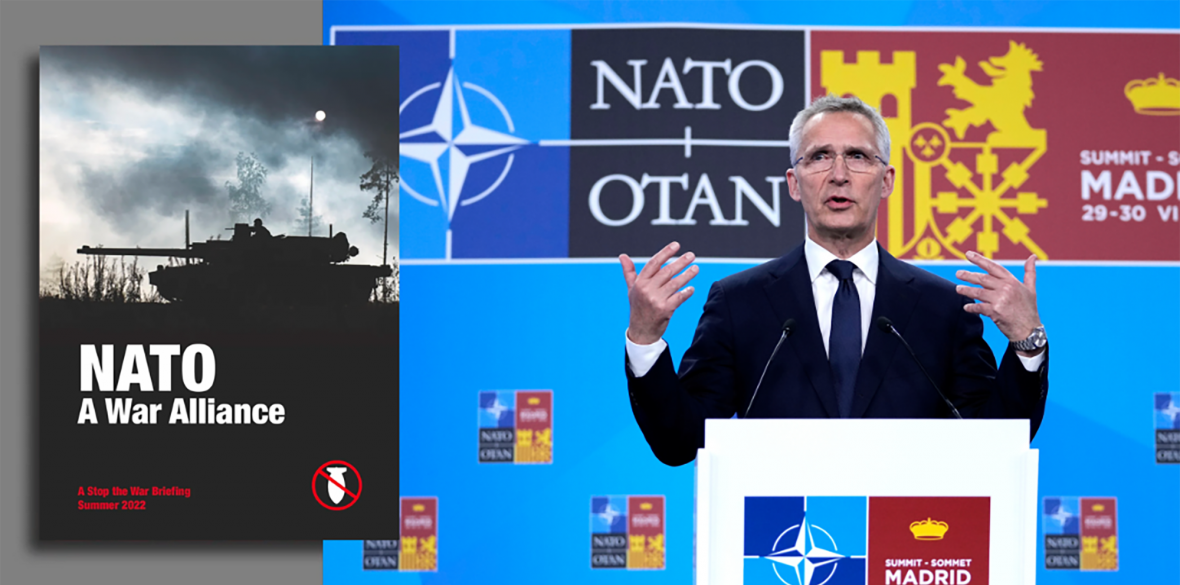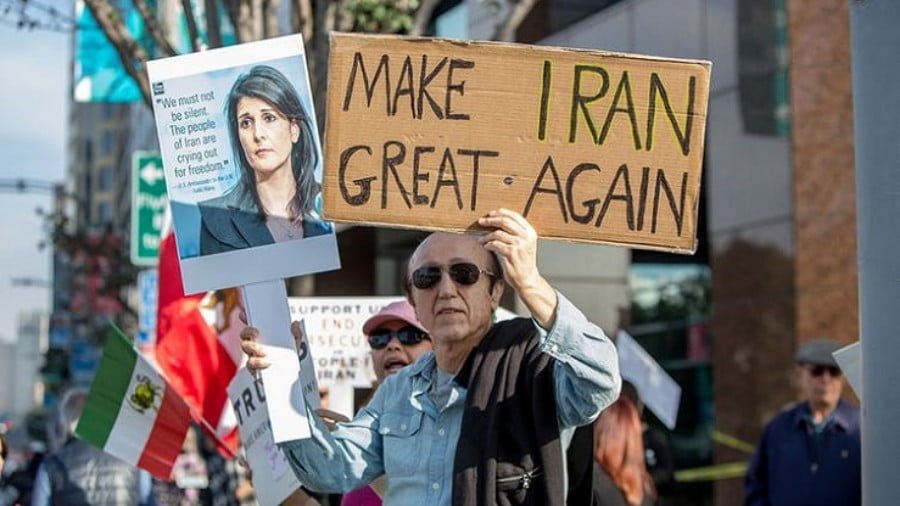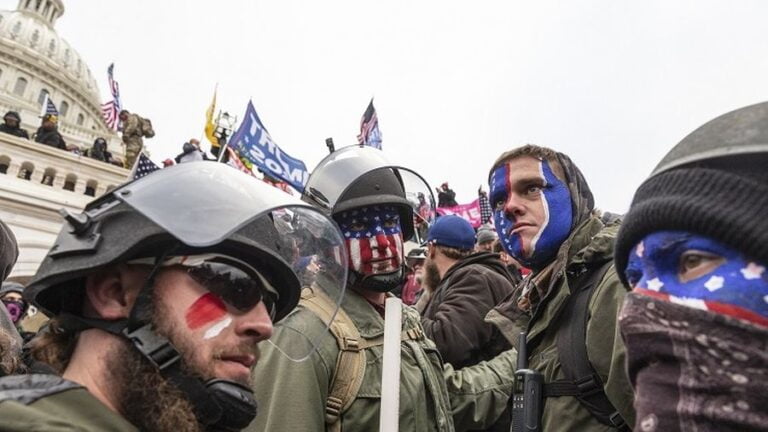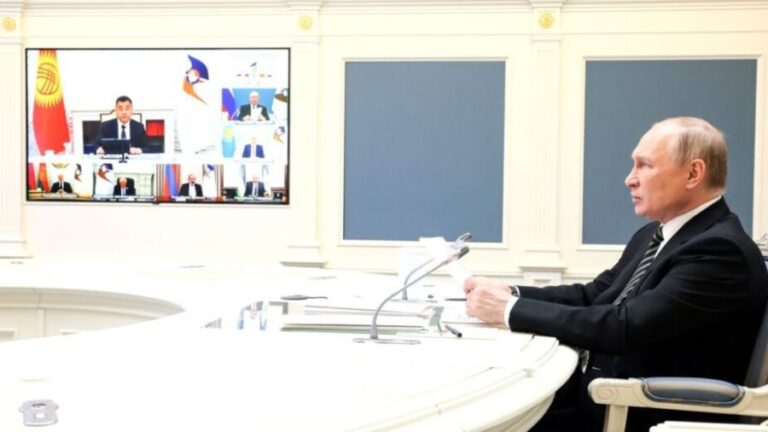NATO Learns Nothing and Forgets Nothing
In other words, Stoltenberg has without prodding confirmed what the Russians have been claiming for years. NATO was turning Ukraine into an armed, hostile military base on Russia’s border, at a time when not only Ukraine was supposed to be implementing the 2015 Minsk agreement, but key NATO powers Germany and France were supposed to be ensuring that Ukraine was indeed implementing that agreement. The Minsk agreements, signed by the Kiev government and the representatives of the people of the Donbass, provided for the gradual reintegration of the Donbass into Ukraine. As part of the step-by-step process of reintegration, the Ukraine constitution would be changed in order to grant certain areas of the Donetsk and Luhansk a “special status.”
None of that ever took place, as the Russians repeatedly pointed out. Indeed, former Ukraine President Petro Poroshenko, who signed the Minsk agreements on behalf of Ukraine, recently admitted that he never had the slightest intention of fulfilling the terms of the Minsk agreements. His goal in signing the agreement had been to buy time to enable Ukraine to build a “powerful military.” “What is the result of the Minsk agreement?” he asked. “We win eight years to create an army. We win eight years to restore economy.”
NATO, as Stoltenberg admits, happily played right along with the Ukraine government’s scheme of pretending to be interested in implementing Minsk while in reality preparing for war. Also playing along with this theater were the NATO powers—Germany, France and the United States in particularly—who were piously pretending to be anxious to implement Minsk while sternly condemning Russia (which was not a party to Minsk—like France and Germany, it was a guarantor) for its supposed failure to implement Minsk. Throughout those eight years, the same NATO powers continued to arm Ukraine, while tacitly and not so tacitly encouraging it to prepare to resolve the problem of the Donbass by force (in clear violation of Minsk). And, as NATO well knew, there was no way Russia would stand by passively in the event of an armed attack by the Kiev government against the ethic Russians of the Donbass. In other words, for eight years NATO prepared Ukraine for war against Russia, which it knew was coming.
Not only was NATO encouraging Ukraine to resolve its Donbass problem by force, NATO was seeking to get Ukraine into the alliance. NATO pursued this goal single-mindedly. The issue of whether whether Ukraine would become a de jure or a de facto NATO member was secondary. What mattered was the blow that Ukraine’s induction into NATO would inflict on Russia’s Great Power pretensions. NATO had clearly taken on board the thinking of former U.S. National Security Adviser Zbigniew Brzezinski who, in his classic The Grand Chessboard: American Primacy and Its Geostrategic Imperatives (1997) had explained the importance of Ukraine to any hope Russia might have to remain a Great Power:
Without Ukraine, Russia ceases to be a Eurasian empire. Russia without Ukraine can still strive for imperial status, but it would then become a predominantly Asian imperial state, more likely to be drawn into debilitating conflicts with aroused Central Asians, who would then be resentful of the loss of their recent independence and would be supported by their fellow Islamic states to the south. China would also be likely to oppose any restoration of Russian domination over Central Asia, given its increasing interest in the newly independent states there. However, if Moscow regains control over Ukraine, with its 52 million people and major resources as well as its access to the Black Sea, Russia automatically again regains the wherewithal to become a powerful imperial state, spanning Europe and Asia.
That’s precisely why Ukraine was so important to NATO, and why NATO pledged that Ukraine (and Georgia) would become members at the 2008 Bucharest summit, and why NATO has repeated the pledge ever since, including even at the Madrid summit in June. The problem was that neither Ukraine nor Georgia remotely qualified for NATO membership—and NATO well knew it. The issue wasn’t corruption or lack of democracy—NATO has had plenty of experience over the years of overlooking such peccadilloes. The problem was that in order to qualify for NATO membership, an aspiring country had to have settled any and all outstanding conflicts on its territory—and exclusively by peaceful means. According to NATO’s own study on enlargement, published in 1995,
States which have ethnic disputes or external territorial disputes, including irredentist claims, or internal jurisdictional disputes must settle those disputes by peaceful means in accordance with OSCE principles. Resolution of such disputes would be a factor in determining whether to invite a state to join the Alliance.
According to NATO’s Membership Action Plan, any NATO aspirants had to commit
to settle their international disputes by peaceful means [and] to settle ethnic disputes or external territorial disputes including irredentist claims or internal jurisdictional disputes by peaceful means in accordance with OSCE principles and to pursue good neighbourly relations.
These were NATO’s own rules, and they obviously precluded Georgia from membership at the time NATO made its fateful declaration in Bucharest that Ukraine and Georgia “will become members of NATO.” Georgia was involved in two serious conflicts on its territory: in Abkhazia and South Ossetia. Within four months of NATO’s Bucharest declaration, war broke out in Georgia as its president, Mikheil Saakashvili, buoyed by NATO’s pledge, sought to resolve his separatist problems with the two breakaway regions once and for all.
Ukraine had the same problem. From 2014 on, and the start of Kiev’s war against the breakaway republics of Donetsk and Luhansk, Ukraine couldn’t possibly be said to have met NATO’s requirement that aspiring member-states must peacefully settle all territorial and ethnic disputes before their membership can be considered. Nonetheless, NATO continued to repeat, year in and year out, that Ukraine and Georgia will be members of NATO even though neither state was anywhere close to meeting NATO’s own proclaimed requirements.
NATO’s rules of the game
Stoltenberg is convinced, as are probably most NATO country leaders, that the rules of the game that NATO sets are rules that everybody else is obligated to accept and to follow. NATO, according to Western leaders, can deliver any amount of lethal military hardware to Ukraine, provide military training to Ukraine, provide intelligence to Ukraine for purposes of targeting Russians and their allies, be actively involved in all aspects of Ukraine’s military targeting decisions, and yet somehow not be a party to the conflict. NATO’s casuistry is as laughable as it is foolish.
In his summer camp address, Stoltenberg declared, “In this conflict, NATO has two tasks. Support Ukraine. And prevent the conflict from spreading into a full-scale war between NATO and Russia.” A simple-minded observer might conclude that the two tasks are mutually incompatible. The more you help Ukraine, the more likely does “a full-scale war between NATO and Russia” become. The more NATO identifies Ukraine’s cause as its own, the more likely it is that Russia will target NATO as a combatant. Not in the bizarro world that Stoltenberg inhabits:
The second task of NATO is to prevent the war from spreading. We do that both by not being a party to the war—we are not entering Ukraine with troops. We also do it by showing clearly that an attack on a NATO country will trigger a response from the whole of NATO.
So, here then is the NATO conceit: NATO is not a “party to the war” because NATO has no “troops” in Ukraine. Yes, it’s true that NATO countries have provided Ukraine with extraordinary quantities of weaponry worth billions of dollars: shoulder-fired MANPAD systems, Harpoon anti-ship missiles, anti-aircraft missiles, Stinger missiles, tanks, armored personnel carriers, attack helicopters, howitzers, multiple-launch rocket systems, High Mobility Artillery Rocket Systems, drones and anti-tank missiles, to name but a few. Yes, it’s also true that NATO countries, particularly the United States, have provided tactical intelligence to Ukraine enabling it to target and kill Russians. Not to worry though, Stoltenberg reassures us, because there are no NATO “troops” on the ground in Ukraine. So, NATO is essentially a bystander—not a combatant at all.
Stoltenberg’s sophistry

Stoltenberg has been engaging in this deceptive sophistry for months now, and thereby seriously misleading the public as to the serious risk NATO is running of provoking an armed confrontation with a nuclear superpower. Stoltenberg’s reasoning is delusional on many levels. First of all, we have to take his word for it that there are no NATO “troops” in Ukraine. We know that there are NATO military advisers and trainers in Ukraine. We don’t know how many, but the number is likely to be fairly substantial. The United States involvement in Vietnam also started with advisers and trainers—U.S. military personnel, in other words. The idea that the U.S. was not a party to the conflict in Vietnam until LBJ ordered full-scale military deployment would have been regarded as too absurd to say with a straight face back in the early 1960s.
Stoltenberg evidently expects everyone in the world—and particularly the Russians—to accept the rules of the game as he has defined them: Because there are supposedly no NATO “troops” on the ground in Ukraine, NATO is not a combatant in Ukraine. This rule, in Stoltenberg’s thinking, leads to a second rule: Since NATO is not a combatant in Ukraine, then any attack by Russia on a NATO power, peacefully and defensively, engaged in the delivery of military hardware to Ukraine, would be regarded by NATO as an act of unprovoked aggression against a member-state. And, of course, according to NATO’s self-proclaimed rules, an act of unprovoked aggression against one is an act of unprovoked aggression against all. One for all, and all for one!
This is the frightening and delusional logic that drives NATO toward the edge of the cliff. In helping Ukraine fight Russia, NATO argues, it is only helping Ukraine defend itself. This of course is wholly untrue. As we have seen, Stoltenberg has numerous times admitted that NATO has been actively involved in the financing, arming and training of Ukraine’s forces. At NATO’s Madrid summit, he touted NATO’s delivery of extraordinary quantities of arms to Ukraine as demonstration of the alliance’s long-standing commitment to the country:
All of this is making a difference on the battlefield every day. And since the invasion in February, Allies have stepped up even more. With billions of euros’ worth of military, financial, and humanitarian assistance.
In other words, what NATO has been doing since February of this year has been a continuation of what it had been doing since 2014. NATO did not join the fray in response in February; NATO has been there for at least eight years, pouring in weaponry, ignoring repeated Russian warnings about “red lines” and provoking the inevitable Russian retaliation against the ever-expanding hostile armed camp on its border.
NATO was anything but a disinterested observer that responded in shock in February with a desperate desire to do something to help a plucky little country. Yet NATO needs to maintain this absurd fiction in order to be able to maintain in public the line that Russia’s attack was “unprovoked.” As NATO will have it, Russia’s launch of what it called “special military operations” in Ukraine was an act of unprovoked aggression—ignoring of course the non-implementation of Minsk by Ukraine and NATO powers France and Germany; NATO’s repeated promises of membership to Ukraine; Ukraine’s brutal eight-year-long war against its own citizens in the Donbass; and NATO’s transformation of Ukraine into, effectively, an armed aircraft carrier directed at Russia. In much the same way, NATO will insist that a Russian attack on a NATO member-state actively engaged in arming Ukraine is also an act of unprovoked aggression.
As we know, according to the 1949 North Atlantic Treaty, once a NATO member-state is the victim of an act of unprovoked aggression, then all of NATO goes into action— “One for all, and all for one!” goes the battle-cry. So Russia, Stoltenberg warns menacingly, had better watch out and not strike out at anyone in NATO. Otherwise, Russia will have a full-scale war with all 30 NATO member-states on its hands.
Misreading the NATO charter
NATO and NATO country leaders may satisfy themselves with the thought that they can arm and fund Ukraine to their heart’s content and that Russia would be too afraid to attack any piece of NATO real estate lest such a reckless act brings the full wrath of NATO down on its head. However, there is no reason to think that Russia or China or anyone in the world accepts and would be willing to follow the rules that NATO has invented for itself. To anyone with the slightest common sense it is obvious NATO is a party to the conflict, has been so for a long time, and as such is a legitimate target for attack if military circumstances warrant.
Above all, NATO’s vaunted Article 5 is not the cast-iron guarantee ensuring that all NATO member-states would rush to war on behalf of one of its members against a would-be attacker that NATO propagandists think it is. Here is what Article 5 says:
The Parties agree that an armed attack against one or more of them in Europe or North America shall be considered an attack against them all and consequently they agree that, if such an armed attack occurs, each of them, in exercise of the right of individual or collective self-defense recognized by Article 51 of the Charter of the United Nations, will assist the Party or Parties so attacked by taking forthwith.
In other words, NATO member-states, having agreed that an attack has taken place against a member-state, will then doubtless agree that this attack constitutes an attack against all, and will then decide…what exactly? Well, they will decide what, if anything, they can or will do about it. There is no obligation on anyone to do more than he is willing or able to do. Since NATO is mostly made up of deadbeats and militarily inconsequential powers, the only issue that matters is what the one militarily non-inconsequential power—the United States—will decide to do.
More significantly, adherence to Article 5, Stoltenberg’s lodestar, presupposes that NATO and all NATO member-states have adhered to the North Atlantic Treaty’s Article 1:
The Parties undertake, as set forth in the Charter of the United Nations, to settle any international dispute in which they may be involved by peaceful means in such a manner that international peace and security and justice are not endangered, and to refrain in their international relations from the threat or use of force in any manner inconsistent with the purposes of the United Nations.
This, by Stoltenberg’s innumerable admissions, NATO countries have failed to do. They have gone out of their way to avoid settling their “international dispute” with Russia by “peaceful means.” They have gone out of their way to aggravate an “international dispute” that should never have happened. This “international dispute” moreover took place on territory that was not part of NATO’s real estate.
NATO’s flagrant violation of Article 1 precludes its invocation of Article 5. A Russian attack on NATO territory, while almost certainly unwise, would not be an act of unprovoked aggression. It would be nothing if not provoked. Stoltenberg’s rules of the game are a figment of his imagination. While he would doubtless cry indefatigably “One for all, and all for one,” there would be no legal basis on his part to demand that NATO countries put themselves in the line of fire just because some member-states have been recklessly seeking to draw Russian into launching an attack on them.
Leaving aside Article 5 and the imaginary safety-net that it’s supposed to provide, it’s particularly pathetic—though entirely in keeping with past NATO practice—that neither Stoltenberg nor the leader of any key NATO power, seems very much to care about the object of their solicitude, namely Ukraine itself. It’s been obvious for some time that the more NATO “assists” Ukraine, the less of Ukraine there will be at the end of the fighting. Russian Foreign Minister Sergei Lavrov recently explained that, in light of the U.S. delivery to Kiev of long-range weaponry such as the HIMARS, Russia will have to expand its goals and go further into Ukraine in order to ensure the security of the residents of the Donbass, not to mention those of Russia:
This process continues, consistently and persistently. It will continue as long as the West…desperate to aggravate the situation as much as possible, continues to flood Ukraine with more and more long-range weapons. Take the HIMARS. [Ukraine] boasts that they have already received 300-kilometre ammunition. This means our geographic objectives will move even further from the current line. We cannot allow the part of Ukraine that Vladimir Zelensky, or whoever replaces him, will control to have weapons that pose a direct threat to our territory or to the republics that have declared their independence and want to determine their own future.
Since the demise of the Soviet Union and the dissolution of the Warsaw Pact, NATO has launched at least three, maybe four, wars. Without constant expansion and the creation of new enemies along the way through this constant expansion, NATO would have no justification for its continued existence. NATO seems unable to get off this path, no matter how fraught with danger it clearly is—as the wars in Yugoslavia and Ukraine have demonstrated. As Stoltenberg’s delusional remarks illustrate, things could get a lot more alarming—and soon.







